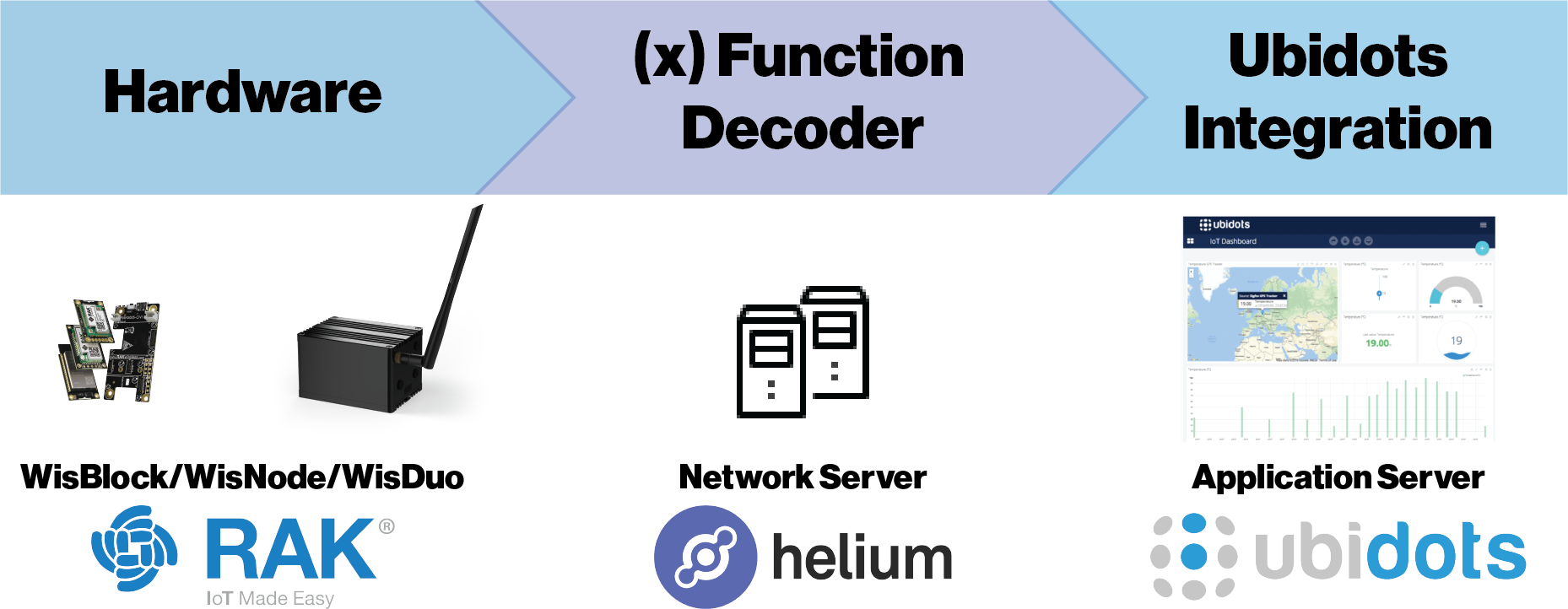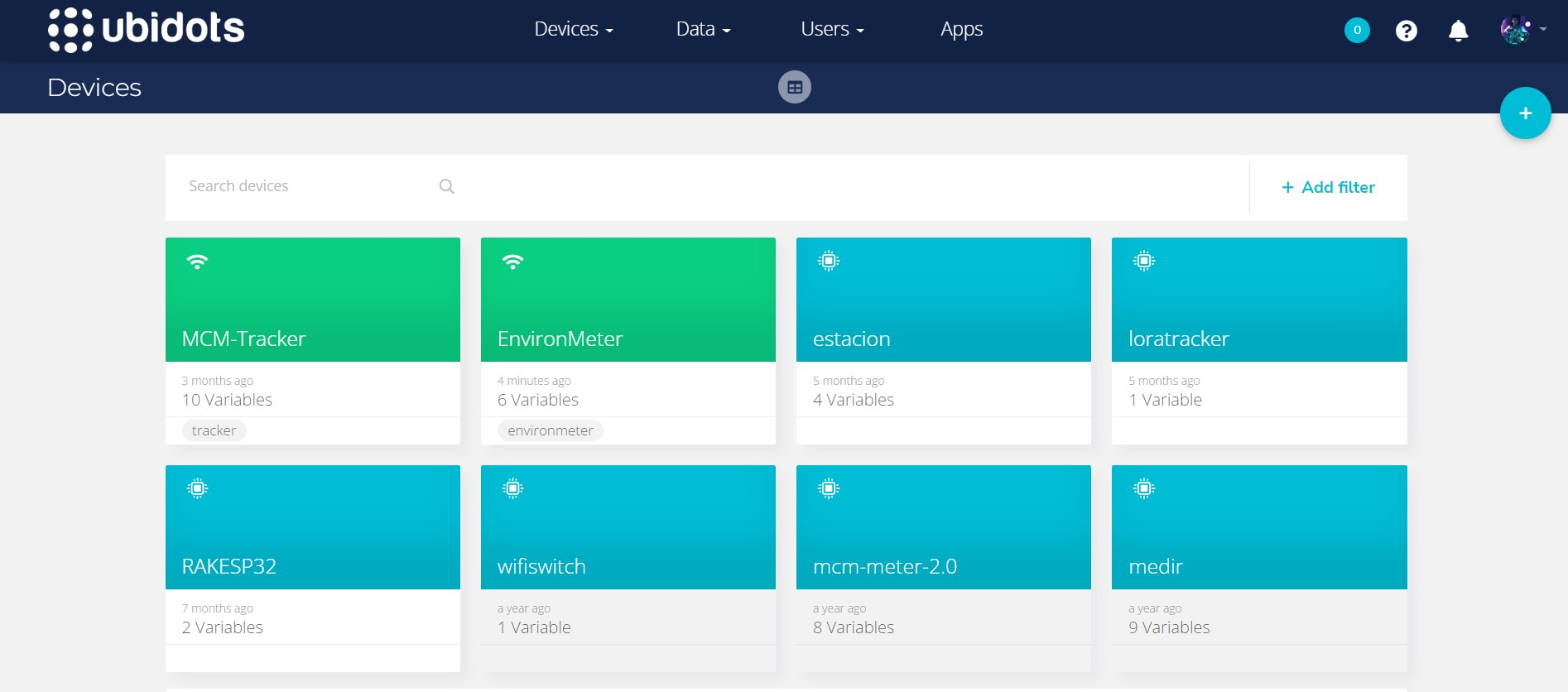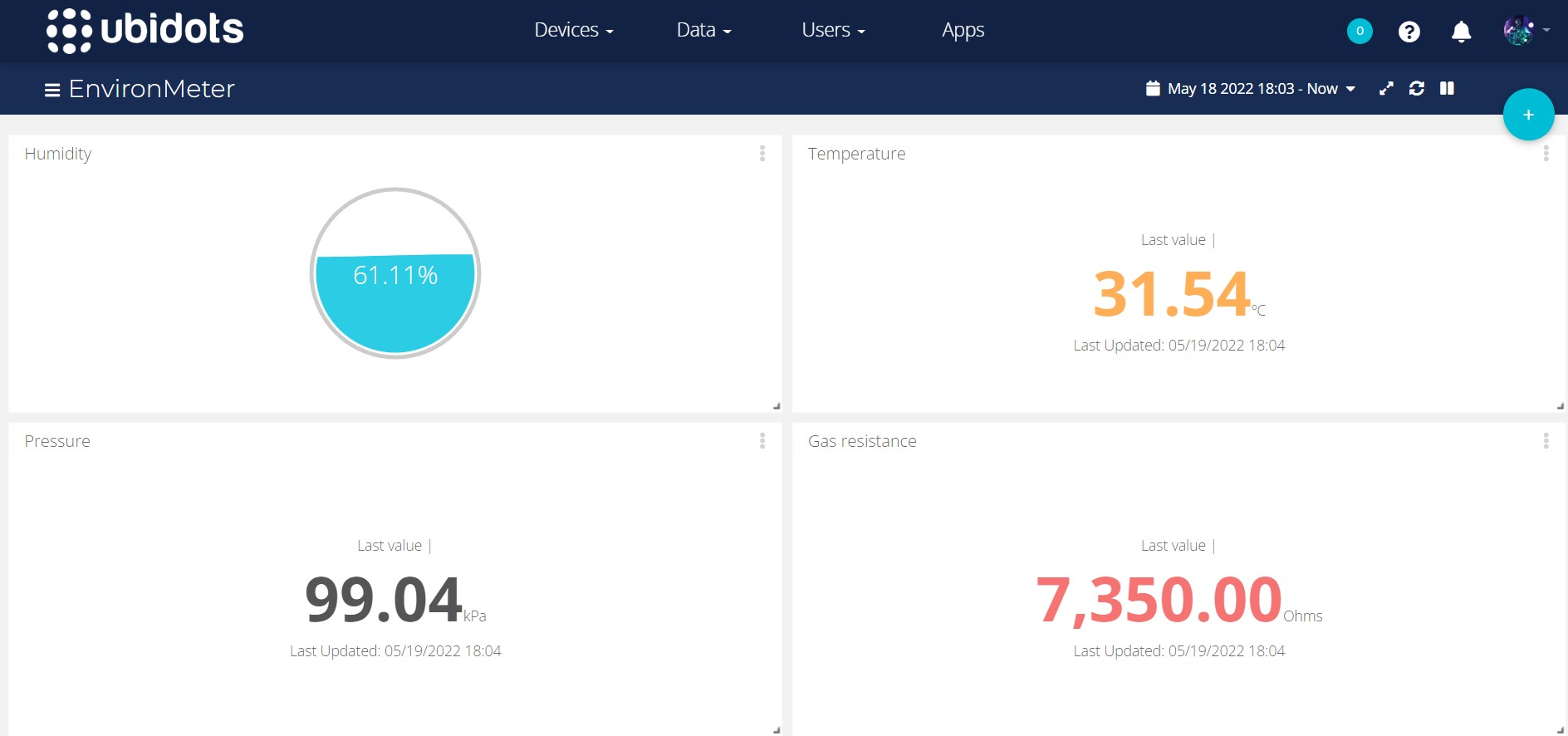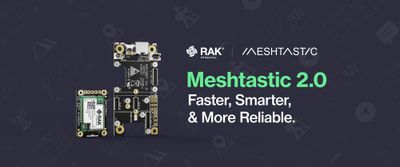Developing Enterprise IoT Solutions powered by RAKwireless and Ubidots
More than a year ago, RAKwireless and Ubidots joined forces to drive the integration of the different stages involved in an IoT enterprise solution, aiming to offer globally scalable and reliable solutions in three stages: Hardware, Connectivity, and Application, integrating products and services to be straightforward:
- Hardware: Connection of the physical world with the digital world. This integration stage allows sensing the diverse variables surrounding the various industries, such as agriculture, smart cities, and manufacturing, to name a few, to improve processes, save resources, and prevent failures through preventive maintenance.
- Connectivity: Ability to connect systems and conduct transactions. In this case, it sends the variables collected with the hardware to the cloud. Components such as LoRaWAN gateways are needed to connect and send data to a network server.
- Application: The final step is to convert the data into valuable information for the user's decision-making and deliver it through an application to visualize and analyze it to improve the process and save
User Case
Consider a problem that IoT can solve. For example, imagine a farm where you are in charge of developing a system capable of improving the growth of all crops located on different hectares. It means you have to monitor its states, such as soil temperature, moisture and weather conditions: wind, rain, and sunlight. Then, based on the information gathered, do watering, pest removal, and perform other actions needed to improve processes and save resources.
Indeed, you would imagine that this project would require a team of engineers to be implemented. But the answer is no. A person with basic technical knowledge, with a good understanding of the ecosystem and the needs of the solution, can implement it.
Let's explain a bit more. It can be solved in just three steps:
- Implement IoT sensors and processing tools to monitor the required variables. As an end-to-end infrastructure provider, RAKwireless offers all you need to implement an IoT solution for any industry.
- As the variables could be located in different places throughout a large field, it's necessary to use a network to connect all of the devices deployed in, using low power consumption. Therefore the use of LoRaWAN is ideal for forwarding the data to the cloud. RAK's gateways for LoRaWAN can be operated with different network servers, such as The Things Network or Helium.
- Once the data goes into the cloud, we must find a user-friendly way to understand it efficiently to make more intelligent decisions. For this purpose, the usage of IoT platforms is ideal since they handle all the necessary aspects to perform any application for the final user. Ubidots is one of the leading IoT platforms since it not only allows data storage and visualization but also allow rapidly assembling and launching white-labeled Internet of Things applications with different admin features to maintain a large number of devices from different projects without having to write code or hire a software development team. It means that you can manage and offer a data platform to other users capable of helping them make decisions efficiently.
All of the above is entirely agnostic to the needs of the solution. Therefore it can be implemented in any industry. Making them the ideal tools to create and deploy enterprise IoT solutions.
Integration Architecture
Now that you know the required steps to implement and deploy the solution, let's get depth and understand the integration.

The entire architecture is shown in the image above. In this example, we use Helium, but even you can use WisGate to create your LoRaWAN network and send data using the network server of your preference, such as The Things Network, LORIOT, Chirpstack, among others.
Ubidots is device agnostic, meaning that regardless of the product's brand, any device capable of reaching out an internet connection by LoRaWAN, Cellular, NB-IoT, or WiFi will be able to manage a communication using the supported protocols such as TCP/UDP, HTTP, and MQTT.

RAKwireless offers product lines for every hardware need. Using WisBlock, you can create an industrial prototype of a solution, quickly moving from a proof-of-concept stage to mass production. You can connect sensors, processing, communication, and power modules wirelessly and promptly. Another line of products is WisDuo, which adapts to the user who develops customized hardware solutions, such as companies or hardware engineers. Finally, there is WisNode, a complete solution for specific applications ready to configure and connect. It mainly focuses on two applications: tracking and monitoring environmental variables.
The above hardware solutions are simple to configure and program. This year, RAKwireless has new tools to make it even easier. With RUI3, the user can program a WisBlock or WisDuo from an API approach, using a set of functions, that allows building an application that leaves hardware configurations behind. Regardless of your preferred development environment, this tool is available for Arduino and Visual Studio. WisToolBox is a complementary software tool for RUI3-based RAK modules, primarily used for device configuration and management via an intuitive user interface – supported in different operating systems on desktop and smartphones, such as Windows, Linux, macOS, Android, and iOS.
After programming and sending data from your end device, this data will be passed through a gateway to be sent to the cloud. In this specific case, the cloud is a LoRaWAN® network server. This is the place where the data arrives to be converted. There is a format to send this data to the LoRaWAN® network server called Payload and commonly is in Hexadecimal format. Through a Decoder function, it is converted to another format, so that it is understandable by the server and the user, this is well known as JSON format.

A LoRaWAN network server does not allow storage and, at the same time, to have historical graphs of the data. That's where the Ubidots come into play. The data has to travel to the Ubidots server, and this is possible by configuring a Webhook on the network server to be able to exchange data from the Network Server, to the Ubidots server. Connecting Helium with an application server is simple because its platform has a block design that allows creating connections almost doing drag and drop.
With the data ready on the Ubidots server, the platform uses functions and tools to convert it into information accessible to the end-user. Ubidots uses widgets to display the information according to its nature. In addition, there is the possibility of downloading reports of one or several variables in different periods or obtaining information related to statistics and future predictions.

Ubidots covers all the needs of hardware developers, manufacturers, or IoT entrepreneurs who do not have the experience or resources to develop complete software solutions while allowing them to scale the business with just a couple of quick configurations. Explore its business platform with a free 30-day trial to understand more about its features. Also, if you have research and tinkering purposes, you can use Ubidots STEM, which has free features.
Let's Deploy our Solutions Together
As you can notice, the partnership of Ubidots and RAKwireless opens the doors to many possibilities in the hardware, software, and platform as a service business. It is focused on solving real problems in different environments using IoT.
Start learning about hardware using WisBlock, connectivity with our WisGate line, and check out the Ubidots Help Center to further explore all its features to take your IoT solutions to the next level.
Together we can contribute to the creation of a connected world using IoT. Explore the resources listed below to further your exploration:





